








| Chrysis sp. (Linnaeus, 1761) |









|
|
Scientific name: Chrysis sp. (Linnaeus, 1761) Common name: French name: Order: Hymenoptera Family: Chrysididae Wingspan : Biotope: Geographic area: All continents except Antarctica. Observation period : |
Chrysididae are small hymenopteran wasps with beautiful metallic colours. They are parasitoids of other insects. As they are used to laying their eggs in the nest of these other insects, they are called cuckoo wasps. The members of the Chrysis genus belong to the Chrysidinae subfamily. The members of the other subfamily, Cleptinae, only show metallic colours on the front parts of the body. The abdomen has only three visible segments. The four last ones are folded inside. Telling species part is very difficult. There are about 231 Chrysididae species in France with 96 belonging to the Chrysis genus. The Chrysis genus is characterized by a simple tarsal claw, without any subapical tooth, a closed or almost closed marginal cell on the fore wings, one cross frons carina and by 4 or 6 teeth at the back of tergite 3. The key to tell species apart is very complicated and uses, in particular, the markings located on the underside of sternite 2. This is quite impossible to observe this on live insects in the field. We will just try to confirm the genus. |
| [To know more about the Chrysis sp.] [Next picture] [Top] |
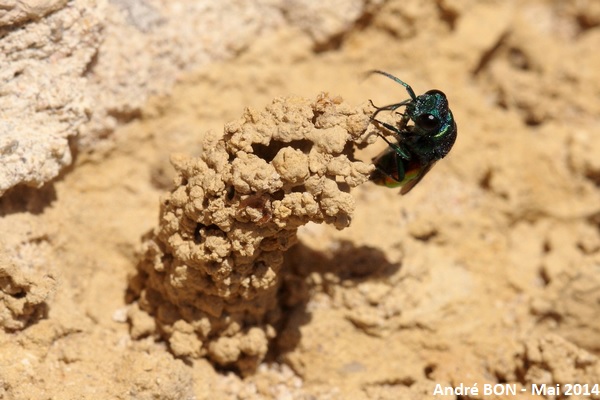
|
The earth walls of this old farm are used every year as a nesting location for potter wasps of the Odynerus genus. You just need to wait a couple of minutes to see these tiny Chrysididae trying to enter into the nests. |
| [To know more about the Chrysis sp.] [Next picture] [Previous picture] [Top] |
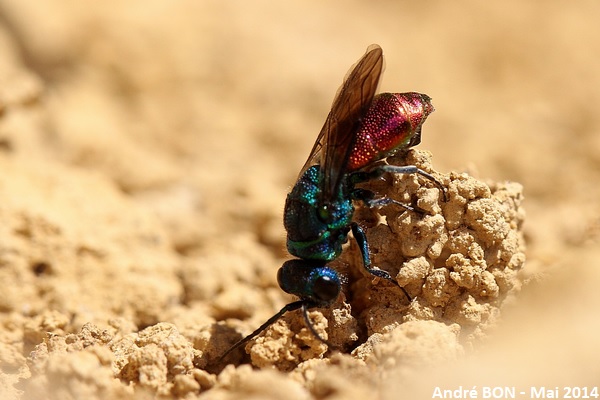
|
The great mobility of these cuckoo wasps makes shooting pictures difficult. |
| [To know more about the Chrysis sp.] [Next picture] [Previous picture] [Top] |
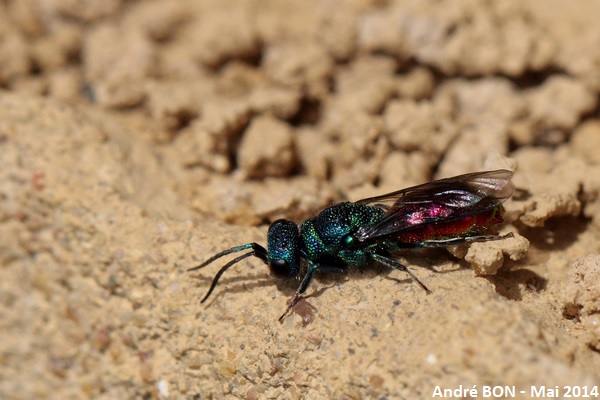
|
Here is an overall view but which is not enough to assess the criteria required to identify the genus. |
| [To know more about the Chrysis sp.] [Next picture] [Previous picture] [Top] |
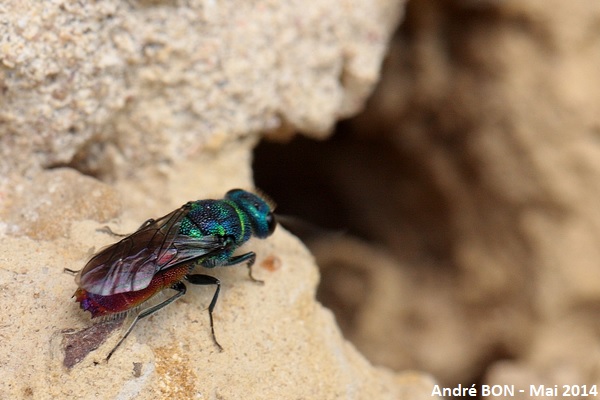
|
This view shows the teeth at the back of tergite 3. A magnification of the hind leg tarsi confirms the lack of any subapical tooth. |
| [To know more about the Chrysis sp.] [Next picture] [Previous picture] [Top] |
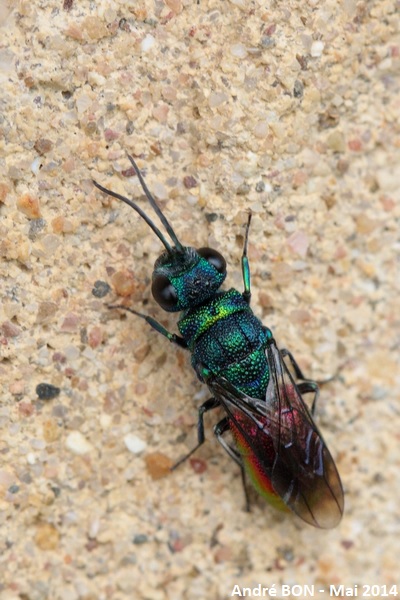
|
This upper side view shows the closed marginal cell on the fore wings. This confirms the Chrysis genus. |
| [To know more about the Chrysis sp.] [Next picture] [Previous picture] [Top] |
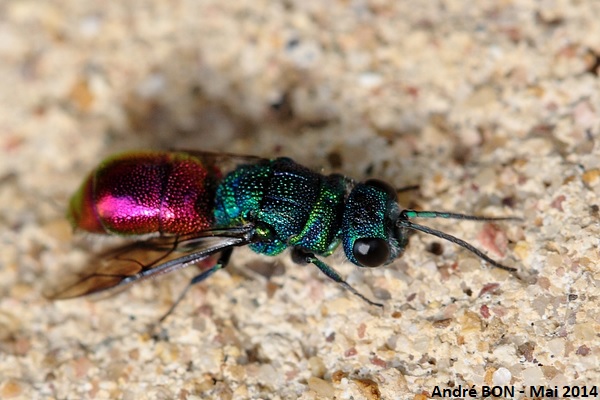
|
You can see here the frons carina. This may be one Chrysis of the ignita group as I have seen many similar pictures listed with this ID. However I am not experimented enough to confirm. |
| [To know more about the Chrysis sp.] [Next picture] [Previous picture] [Top] |
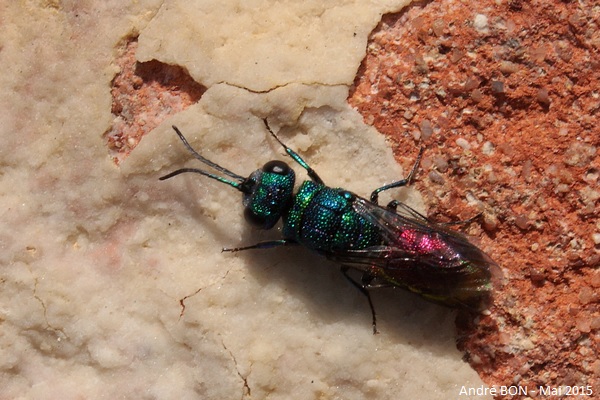
|
Upper side view. |
| [To know more about the Chrysis sp.] [Next picture] [Previous picture] [Top] |

|
The observations being quite numerous I do not despair of finding one day one of these wasps dead of natural death to examine it more closely. |
| [To know more about the Chrysis sp.] [Previous picture] [Top] |
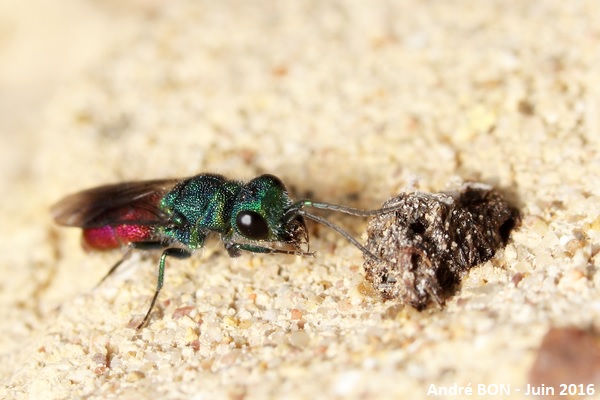
|
I am back every year to see my small Chrysis but I do not make any progress towards the identification of the species. |